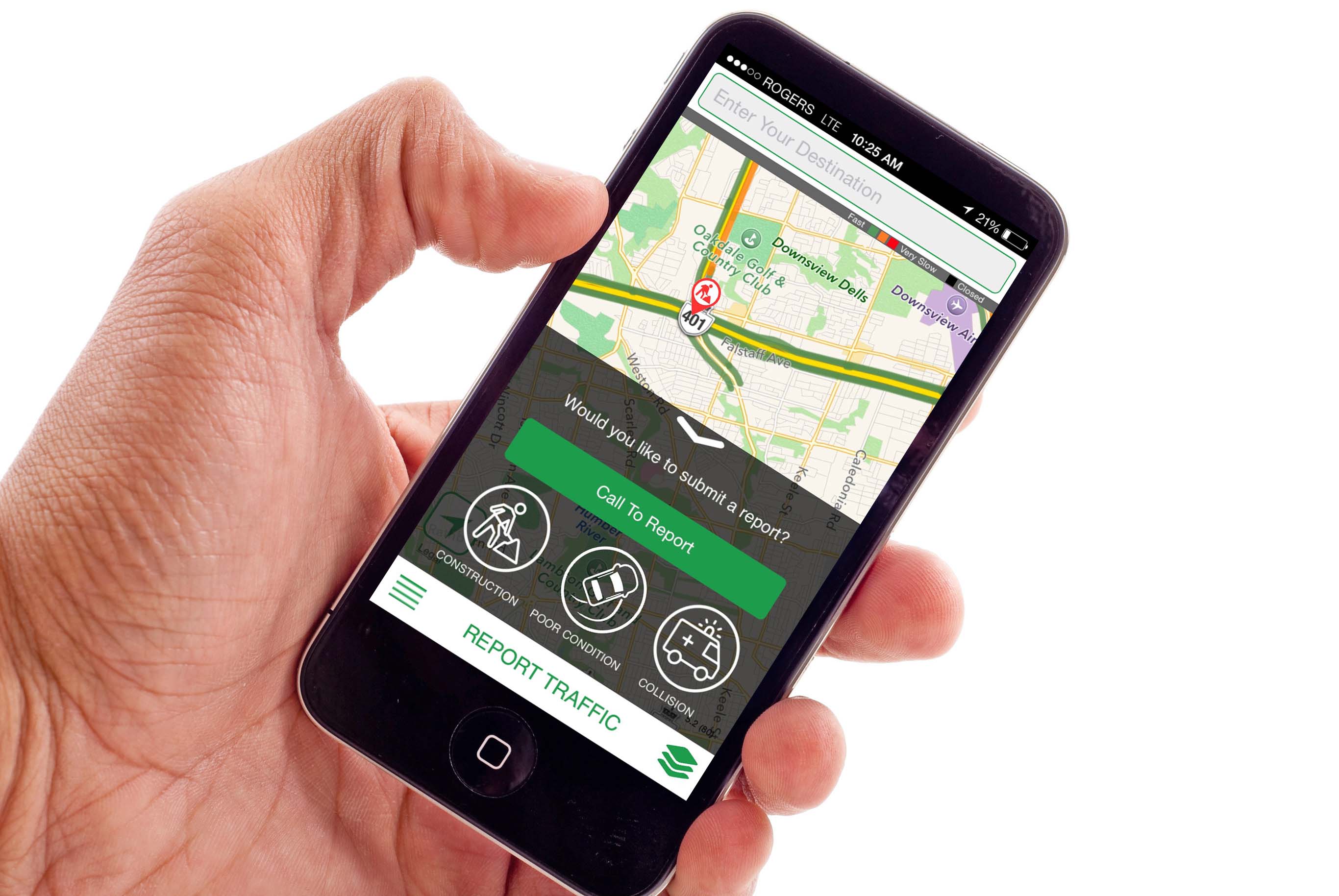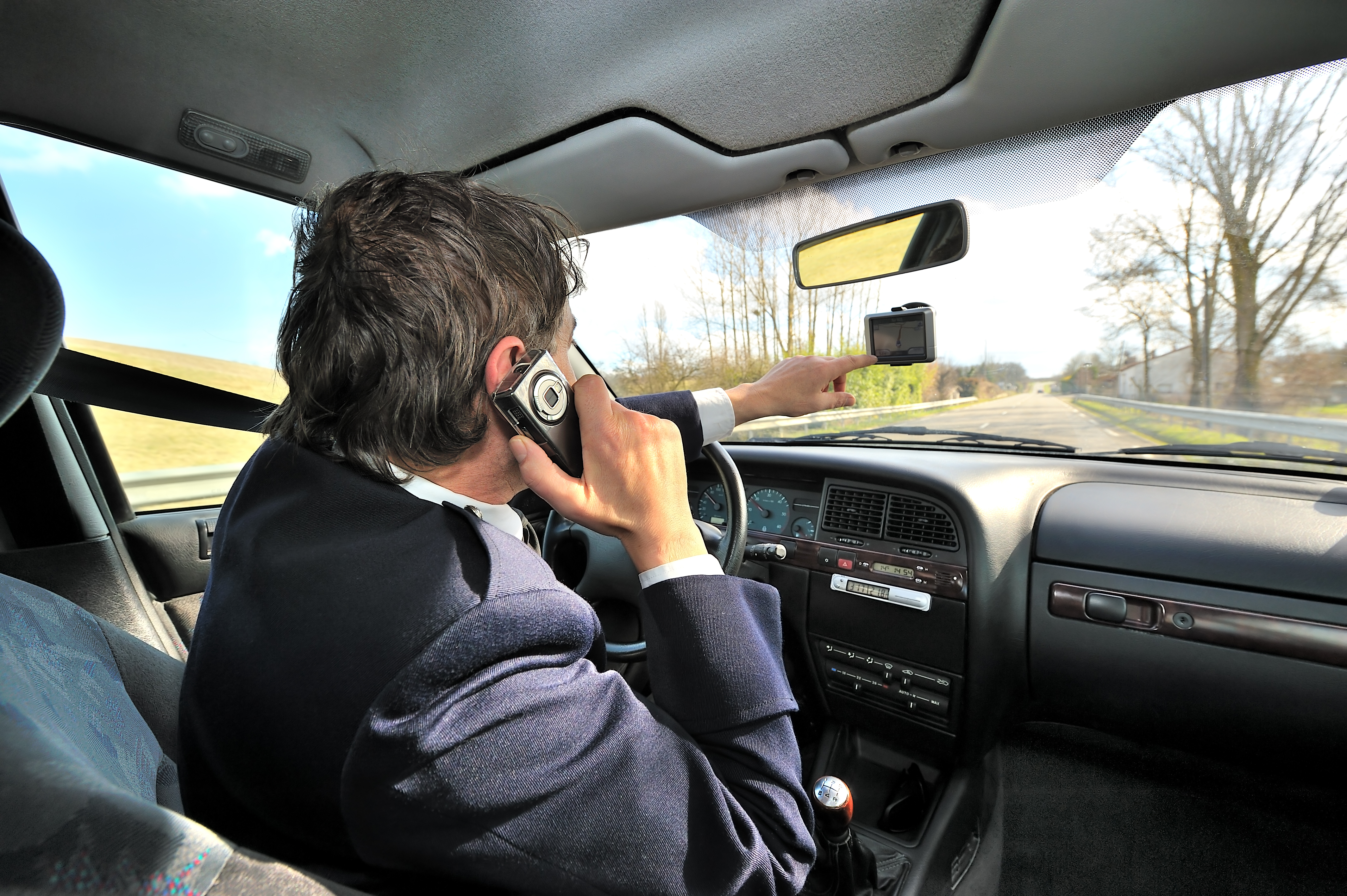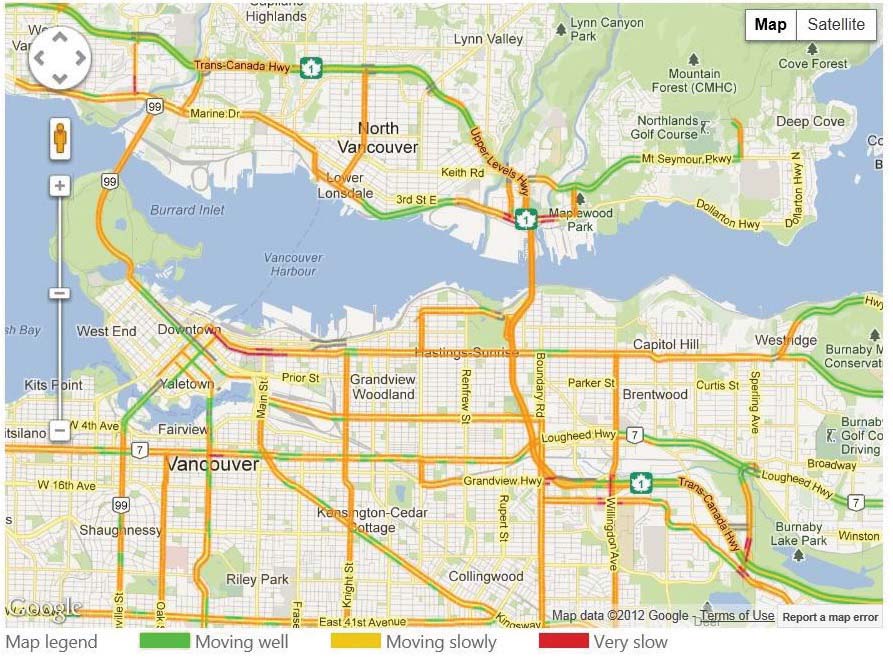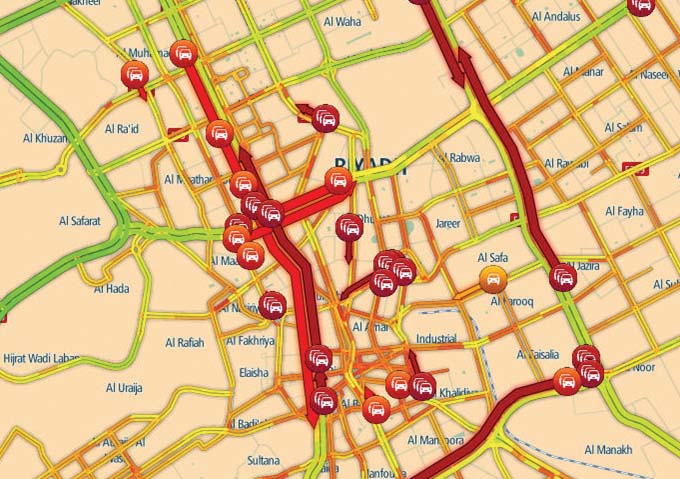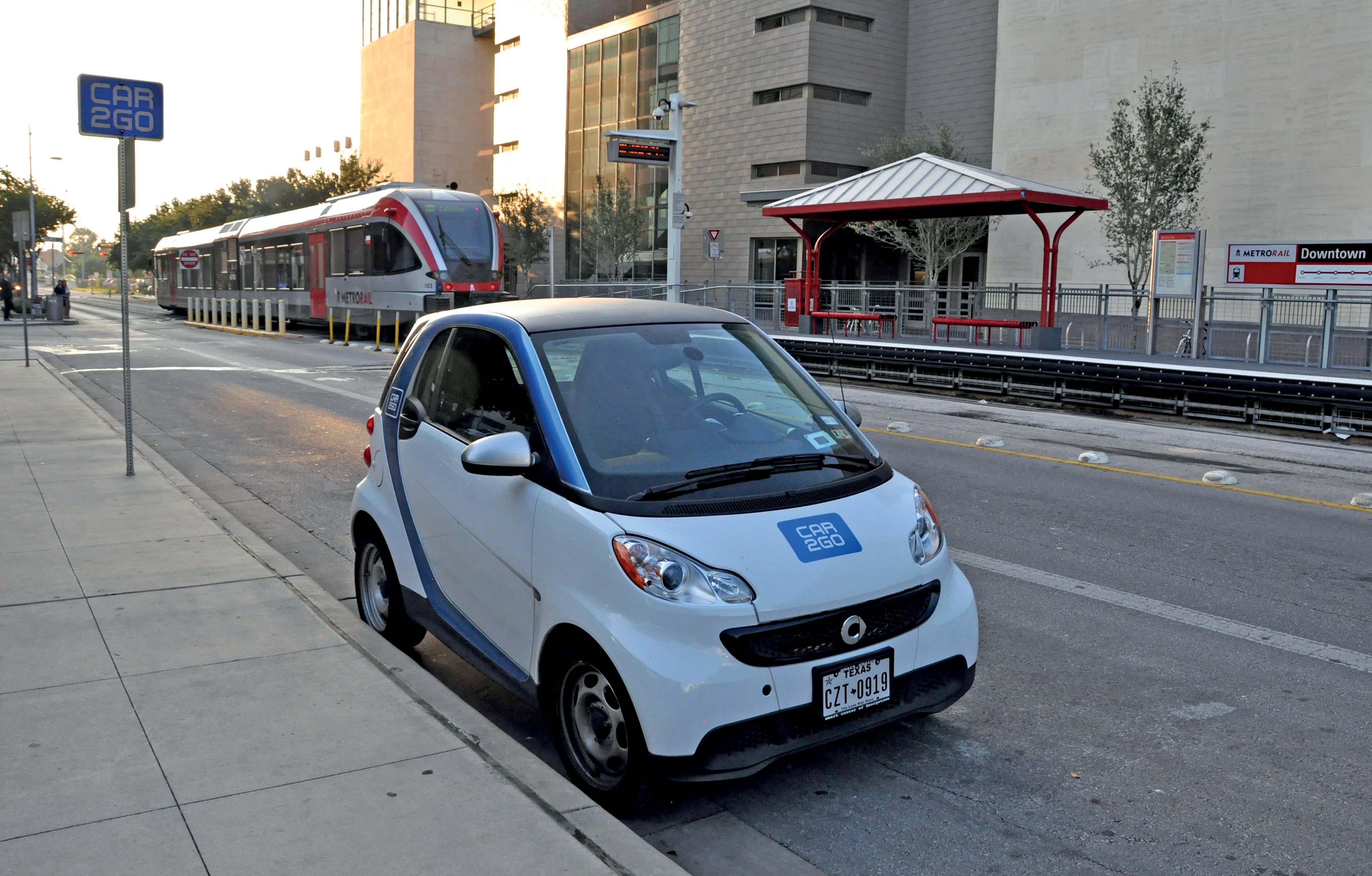The increasing capability of satellite navigation is helping vehicle manufacturers and local authorities as well as individual drivers and fleets. In comparison to the physical ITS infrastructure in towns and cities and on motorways and highways, satellite navigation (satnav) systems have come a long way in a short time. Many (if not the majority) individual drivers and fleets use or have access to a satnav and now the vehicle manufacturers and even local authorities are beginning to utilise satnav derived
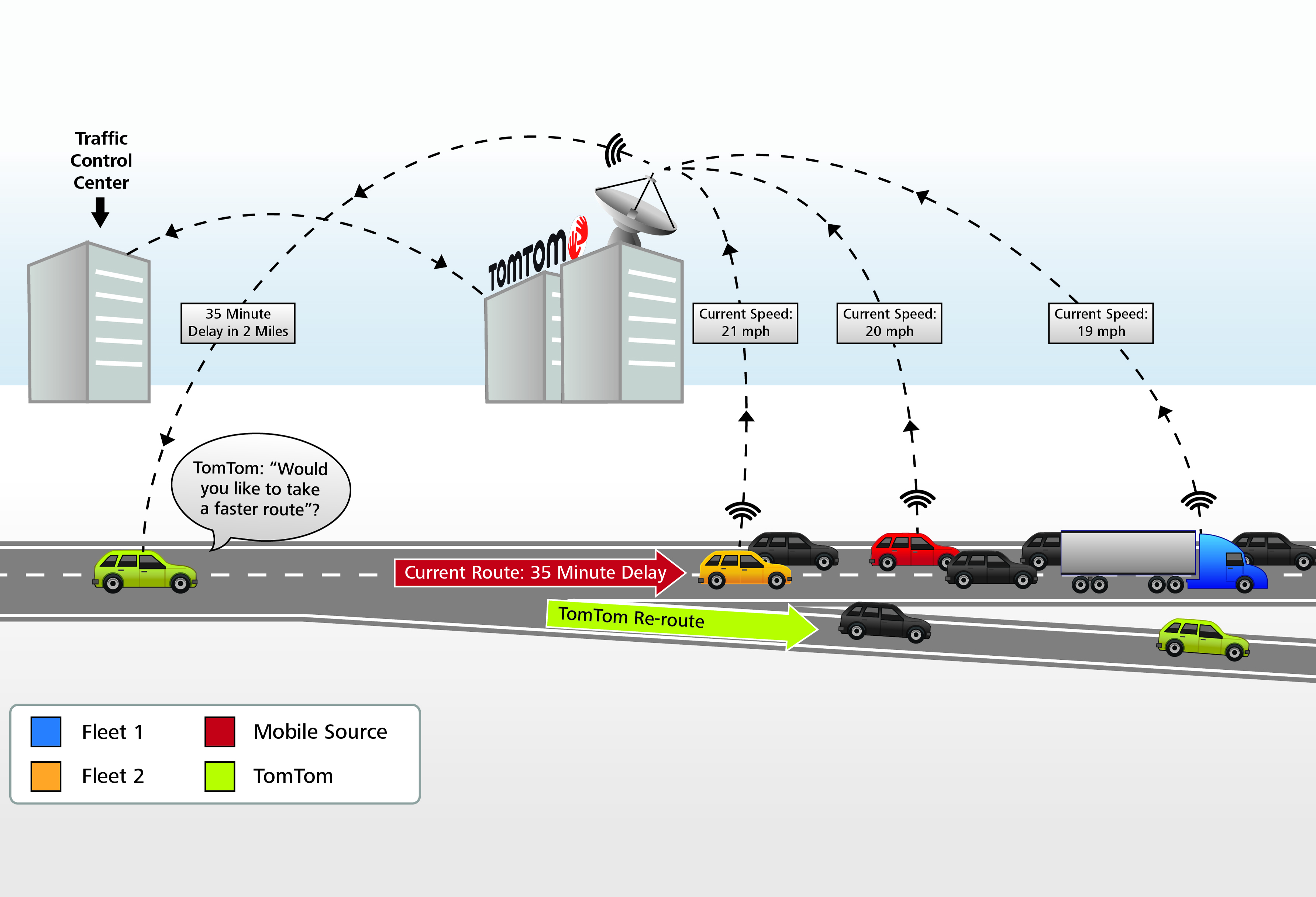
TomTom real-time traffic
The increasing capability of satellite navigation is helping vehicle manufacturers and local authorities as well as individual drivers and fleets.
In comparison to the physical ITS infrastructure in towns and cities and on motorways and highways, satellite navigation (satnav) systems have come a long way in a short time. Many (if not the majority) individual drivers and fleets use or have access to a satnav and now the vehicle manufacturers and even local authorities are beginning to utilise satnav derived data.
According to Nick Cohn, senior business developer with the Traffic Division of satnav giant1692 TomTom, there are sound business reasons why drivers and businesses are prepared to pay for live traffic information via their satnav. “There are not precise figures on the total cost of congestion to an economy and estimates range from 1% to 5% of GDP - but whatever the figure is; it is a lot of money. What we do know from our congestion survey of 160 cities across five continents, is that it can take more than double the time to make a journey during the morning rush hour than it would if the roads were running freely.
TomTom purchased digital map provider571 Tele Atlas in 2008 and is pressing ahead with additional services including live traffic information and congestion avoidance services.
While road authorities can distribute driver information, including road closures, using variable message signs (VMS) and radio, Cohn says: “They cannot know the destination of each vehicle whereas drivers enter their destination into the satnav system before starting their journey. So satellite navigation providers will know which drivers should stay on a congested motorway and which would be better off taking an alternative route. We can also guide them on that route and do it in their own language.
According to Cohn this is why on most occasions drivers will follow directions on their satnavs instead of the static and variable road signs erected and controlled by the road authority. He says feedback from commercial vehicle operators shows that users have reduced their operating costs by up to 10% using its systems due to the time and fuel savings they achieved by driving fewer miles and avoiding congestion.
With its latest live traffic information system, an update is sent to the in-vehicle device every minute or two and users can opt to participate in traffic monitoring. If they do opt-in, the in-vehicle system will log its position and speed every second and will anonymously report this back to TomTom when the next update is received. This information is used to calculate current travel times and locate congestion.
When congestion is detected, if there is a viable alternative the system will re-route affected drivers to prevent them joining the tailback. Cohn says this is a benefit for all drivers: “Although only 5% to 10% of vehicles may have a satnav system with congestion avoidance, those drivers will not join the tailback and so lessen the delay for others.”
But drivers taking diversions using their satnavs has lead to a degree of resentment among residents of small towns and villages who do not welcome large volumes of traffic on local roads. According to Cohn, updates to TomTom’s algorithms should keep vehicles away from small towns and villages.
“By mining the data we have received from the in-car units we know the typical speed of traffic on most roads at any particular time of the day and any day of the week. From our map data we also know the number of intersections on a road or in a town. So when re-routeing a vehicle to avoid congestion, the algorithm will select roads with the fewest intersections and the highest average speeds for the time of day. By using this system rerouted drivers will avoid towns, small country roads and passing schools just as the children are being collected. In addition, if vehicles were being routed through a small village, that in itself would cause secondary delays which the system would detect and automatically select another route for subsequent vehicles to avoid both sets of congestion.
Information received from vehicles could also, with the necessary legislative changes, be utilised in a ‘pay-as-you-drive’ system.
The advent of dedicated commercial vehicle satnavs has started to ease the problems of large vehicles being routed down unsuitably small roads. “We offer specific navigation for trucks and coaches, which take into account vehicle sizes, bridge and tunnel heights and also routes that permit or forbid large vehicles,” says Cohn but he envisages further benefits for truck and coach manufacturers and drivers. “We can tell from the vehicle feedback where a truck or coach is and how fast it is going. We also know from the mapping if there is a sharp bend coming up so it could be possible to warn the driver of the approaching bend.”
Similar technology is already finding its way into the latest heavy commercial vehicles. “By combining 3D mapping with GPS positioning, the system knows when a vehicle is approaching a gradient and how steep that gradient is. Truck manufactures can use that information to warn the driver to select a lower gear before reaching the climb to maintain travel speed and minimises fuel consumption. Furthermore, the topographical information can be combined with on-board weighing data to take account of the load and if an automated transmission is fitted, the optimum gear could be selected without any driver input.”
TomTom’s Webfleet and Rider systems will also log the vehicle’s journey which could mean recording data that shows a vehicle has broken the speed limit but Cohn is adamant this could not be used to prosecute individual drivers. “Our system design does not enable us to identify any individual drivers and we apply privacy protection standards that go beyond most national laws.”
TomTom alone has millions of sensors worldwide (either in-vehicle or via smart phone) and analyse some nine trillion GPS measurements in compiling its Congestion Index. Other partners boost that figure further and Cohn says the satnav industry has both a geographical coverage and granularity that road authorities cannot match. He believes there is plenty of scope for the two to work together: “We might not spot a road closures or accidents everywhere and we use data feeds from road authorities wherever we can.”
In TomTom’s case it is already working with the city authorities in Berlin to provide travel time information. “The road authority has sensing equipment for vehicles on the motorways while we collect travel time and congestion information in the city itself. We analyse this information and send it to the authority who then informs all drivers using VMS, radio and other means. For the authority to install the infrastructure to collect this information in-house would be prohibitively expensive.”
He believes cooperation with the road authorities could yield other benefits including an in-vehicle ‘Speed to Green’ system to smooth traffic flow while reducing tail-end accidents, noise and pollution. “If we were able to receive timing information from the traffic light system and tailback data from any loops embedded in the road, we could inform the driver of the optimum speed to clear the junction without stopping,” Cohn adds.
However, he believes additional work is required to optimise communications with the driver in order not to distract or overload them with information. “So much in-vehicle information is now available that it will have to be rationalised and prioritised. For instance with in-dash systems we already combine fuel and traffic congestion information to inform the driver that they cannot reach their destination without refuelling. The driver then doesn’t have to monitor the fuel, they know there will be delays and they should refuel before they become involved in the congestion or risk a breakdown.”
He concludes by saying: “Drivers follow in-vehicle information because it is pertinent to their particular journey. They are concerned that the information is timely and accurate but not about who collected the data and how provided their privacy is protected.”
CV Enforcement
TomTom has entered a partnership with Dako, a provider of regulatory working time and driving time compliance solutions based on the use of tachographs. This collaboration will see the integration of fleet management and tachograph services including the remote-controlled download of tachograph data. TomTom will integrate the new capability, along with compliant data analysis and long term archiving, into its Webfleet system.
In comparison to the physical ITS infrastructure in towns and cities and on motorways and highways, satellite navigation (satnav) systems have come a long way in a short time. Many (if not the majority) individual drivers and fleets use or have access to a satnav and now the vehicle manufacturers and even local authorities are beginning to utilise satnav derived data.
According to Nick Cohn, senior business developer with the Traffic Division of satnav giant
TomTom purchased digital map provider
While road authorities can distribute driver information, including road closures, using variable message signs (VMS) and radio, Cohn says: “They cannot know the destination of each vehicle whereas drivers enter their destination into the satnav system before starting their journey. So satellite navigation providers will know which drivers should stay on a congested motorway and which would be better off taking an alternative route. We can also guide them on that route and do it in their own language.
According to Cohn this is why on most occasions drivers will follow directions on their satnavs instead of the static and variable road signs erected and controlled by the road authority. He says feedback from commercial vehicle operators shows that users have reduced their operating costs by up to 10% using its systems due to the time and fuel savings they achieved by driving fewer miles and avoiding congestion.
With its latest live traffic information system, an update is sent to the in-vehicle device every minute or two and users can opt to participate in traffic monitoring. If they do opt-in, the in-vehicle system will log its position and speed every second and will anonymously report this back to TomTom when the next update is received. This information is used to calculate current travel times and locate congestion.
When congestion is detected, if there is a viable alternative the system will re-route affected drivers to prevent them joining the tailback. Cohn says this is a benefit for all drivers: “Although only 5% to 10% of vehicles may have a satnav system with congestion avoidance, those drivers will not join the tailback and so lessen the delay for others.”
But drivers taking diversions using their satnavs has lead to a degree of resentment among residents of small towns and villages who do not welcome large volumes of traffic on local roads. According to Cohn, updates to TomTom’s algorithms should keep vehicles away from small towns and villages.
“By mining the data we have received from the in-car units we know the typical speed of traffic on most roads at any particular time of the day and any day of the week. From our map data we also know the number of intersections on a road or in a town. So when re-routeing a vehicle to avoid congestion, the algorithm will select roads with the fewest intersections and the highest average speeds for the time of day. By using this system rerouted drivers will avoid towns, small country roads and passing schools just as the children are being collected. In addition, if vehicles were being routed through a small village, that in itself would cause secondary delays which the system would detect and automatically select another route for subsequent vehicles to avoid both sets of congestion.
Information received from vehicles could also, with the necessary legislative changes, be utilised in a ‘pay-as-you-drive’ system.
The advent of dedicated commercial vehicle satnavs has started to ease the problems of large vehicles being routed down unsuitably small roads. “We offer specific navigation for trucks and coaches, which take into account vehicle sizes, bridge and tunnel heights and also routes that permit or forbid large vehicles,” says Cohn but he envisages further benefits for truck and coach manufacturers and drivers. “We can tell from the vehicle feedback where a truck or coach is and how fast it is going. We also know from the mapping if there is a sharp bend coming up so it could be possible to warn the driver of the approaching bend.”
Similar technology is already finding its way into the latest heavy commercial vehicles. “By combining 3D mapping with GPS positioning, the system knows when a vehicle is approaching a gradient and how steep that gradient is. Truck manufactures can use that information to warn the driver to select a lower gear before reaching the climb to maintain travel speed and minimises fuel consumption. Furthermore, the topographical information can be combined with on-board weighing data to take account of the load and if an automated transmission is fitted, the optimum gear could be selected without any driver input.”
TomTom’s Webfleet and Rider systems will also log the vehicle’s journey which could mean recording data that shows a vehicle has broken the speed limit but Cohn is adamant this could not be used to prosecute individual drivers. “Our system design does not enable us to identify any individual drivers and we apply privacy protection standards that go beyond most national laws.”
TomTom alone has millions of sensors worldwide (either in-vehicle or via smart phone) and analyse some nine trillion GPS measurements in compiling its Congestion Index. Other partners boost that figure further and Cohn says the satnav industry has both a geographical coverage and granularity that road authorities cannot match. He believes there is plenty of scope for the two to work together: “We might not spot a road closures or accidents everywhere and we use data feeds from road authorities wherever we can.”
In TomTom’s case it is already working with the city authorities in Berlin to provide travel time information. “The road authority has sensing equipment for vehicles on the motorways while we collect travel time and congestion information in the city itself. We analyse this information and send it to the authority who then informs all drivers using VMS, radio and other means. For the authority to install the infrastructure to collect this information in-house would be prohibitively expensive.”
He believes cooperation with the road authorities could yield other benefits including an in-vehicle ‘Speed to Green’ system to smooth traffic flow while reducing tail-end accidents, noise and pollution. “If we were able to receive timing information from the traffic light system and tailback data from any loops embedded in the road, we could inform the driver of the optimum speed to clear the junction without stopping,” Cohn adds.
However, he believes additional work is required to optimise communications with the driver in order not to distract or overload them with information. “So much in-vehicle information is now available that it will have to be rationalised and prioritised. For instance with in-dash systems we already combine fuel and traffic congestion information to inform the driver that they cannot reach their destination without refuelling. The driver then doesn’t have to monitor the fuel, they know there will be delays and they should refuel before they become involved in the congestion or risk a breakdown.”
He concludes by saying: “Drivers follow in-vehicle information because it is pertinent to their particular journey. They are concerned that the information is timely and accurate but not about who collected the data and how provided their privacy is protected.”
CV Enforcement
TomTom has entered a partnership with Dako, a provider of regulatory working time and driving time compliance solutions based on the use of tachographs. This collaboration will see the integration of fleet management and tachograph services including the remote-controlled download of tachograph data. TomTom will integrate the new capability, along with compliant data analysis and long term archiving, into its Webfleet system.



